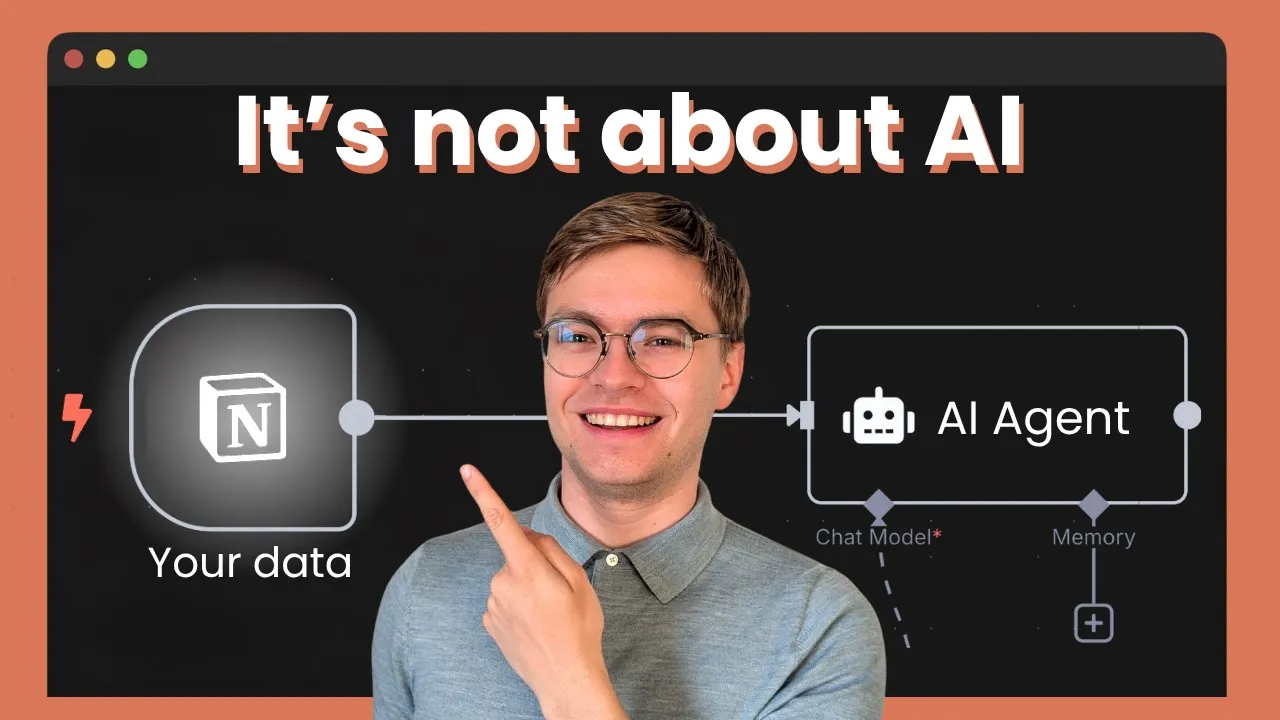How to Create Authentic AI Content from Expert Knowledge
When you publish content under your personal name, every piece represents your expertise and reputation. So why would you want a random AI model writing low-quality blog posts that could have come from anyone? The challenge of AI-powered content creation isn’t the technology: it’s preserving what makes your content uniquely yours while leveraging automation’s efficiency.
The Authenticity Crisis in AI Content
Most AI-generated content has a tell-tale generic quality. It reads like it could have been written by anyone, about anything, for no one in particular. This happens because people treat AI as a content creator rather than a content transformer. They ask it to generate ideas, insights, and expertise from thin air, forgetting that AI can only recombine patterns it has seen before.
When you publish generic AI content under your name, you’re not just failing to provide value: you’re actively damaging your reputation. Readers can sense when content lacks authentic expertise. They know when they’re reading regurgitated commonplaces versus real insights born from experience. Your name on generic content tells them you either don’t have real expertise to share or don’t respect them enough to share it.
Expert Knowledge as Raw Material
The key to authentic AI-assisted content is treating your expert knowledge as the raw material that AI transforms, not replaces. Think of AI as a skilled editor who can reshape your insights for different formats and audiences, but who needs your original thoughts to work with. Without your expertise as input, AI has nothing unique to transform.
This approach requires capturing your knowledge in forms AI can work with: detailed transcripts of your presentations, comprehensive notes from your experiences, structured documentation of your insights. For advanced techniques on working with AI systems effectively, explore my AI agent development guide for practical implementation. The goal isn’t to create content from nothing but to transform your existing expertise into new formats while preserving its essence.
The Voice Preservation Challenge
Your voice, the unique way you explain concepts, the specific examples you use, the particular insights you emphasize, is what makes your content valuable. Generic AI output strips away these distinctive elements, replacing them with statistical averages of how “content like this” typically sounds.
Preserving voice in automated content requires feeding AI not just information but your specific way of presenting that information. When AI has access to how you actually explain things, through transcripts, notes, or other captures of your natural communication, it can maintain elements of your voice even while restructuring content for different purposes. Understanding effective communication patterns with AI systems is crucial - learn about AI prompt engineering patterns for production systems.
The Synergy Effect
When automated content stays true to your expertise, it creates powerful synergy with your other work. A blog post derived from your video presentation doesn’t just avoid being generic: it actively reinforces and extends your original message. Readers who discover your blog find content that genuinely represents your thinking, building trust that leads them to explore more of your work.
This synergy only exists when the automated content shares DNA with your original material. Generic AI content breaks this connection, creating isolated pieces that don’t reinforce your broader body of work. But content transformed from your actual expertise creates a coherent ecosystem where each piece strengthens the others.
Maintaining Personal Stakes
One crucial aspect of authenticity is maintaining personal stakes in what you publish. When content is purely AI-generated, you have no real investment in its claims or quality. But when it’s derived from your own expertise, you remain accountable for its accuracy and value. This accountability shows through in the final product.
Readers can sense when an author stands behind their content versus when they’re just publishing whatever AI produced. The difference isn’t subtle: it’s the difference between content that carries conviction and content that merely exists. Maintaining these personal stakes is essential for building and keeping audience trust.
The Expertise Amplification Model
The right approach to AI content automation isn’t replacement but amplification. Your expertise remains the irreplaceable core, while AI helps you reach more people in more formats without diluting your message. This model respects both your knowledge and your audience’s time by ensuring every piece of content traces back to real insight.
This amplification model also protects the value of expertise in an age of AI abundance. As generic AI content floods the internet, authentic expert content becomes more valuable, not less. By using AI to amplify rather than replace your expertise, you’re positioning yourself on the right side of this divide. For comprehensive strategies on leveraging AI in business contexts, explore my guide on AI strategies that work best for businesses.
Building Trust Through Transparency
Authenticity in AI-assisted content also means being transparent about your process. When content genuinely derives from your expertise, you can confidently point to its origins. You can show how your video became a blog post, how your presentation became an article, how your experience became accessible insights.
This transparency builds trust because it shows you’re not trying to fake expertise you don’t have. You’re using AI as a tool to share your real knowledge more effectively, not as a substitute for having something valuable to say. Your audience appreciates this honesty and rewards it with continued attention.
To see how I maintain authenticity while automating content creation from my YouTube videos, watch the full video tutorial on YouTube. I show real examples of how expert knowledge transforms into valuable automated content while preserving voice and authenticity. Want to learn more about building valuable, expertise-driven systems? Join the AI Engineering community where we focus on amplifying real knowledge rather than generating generic content.

